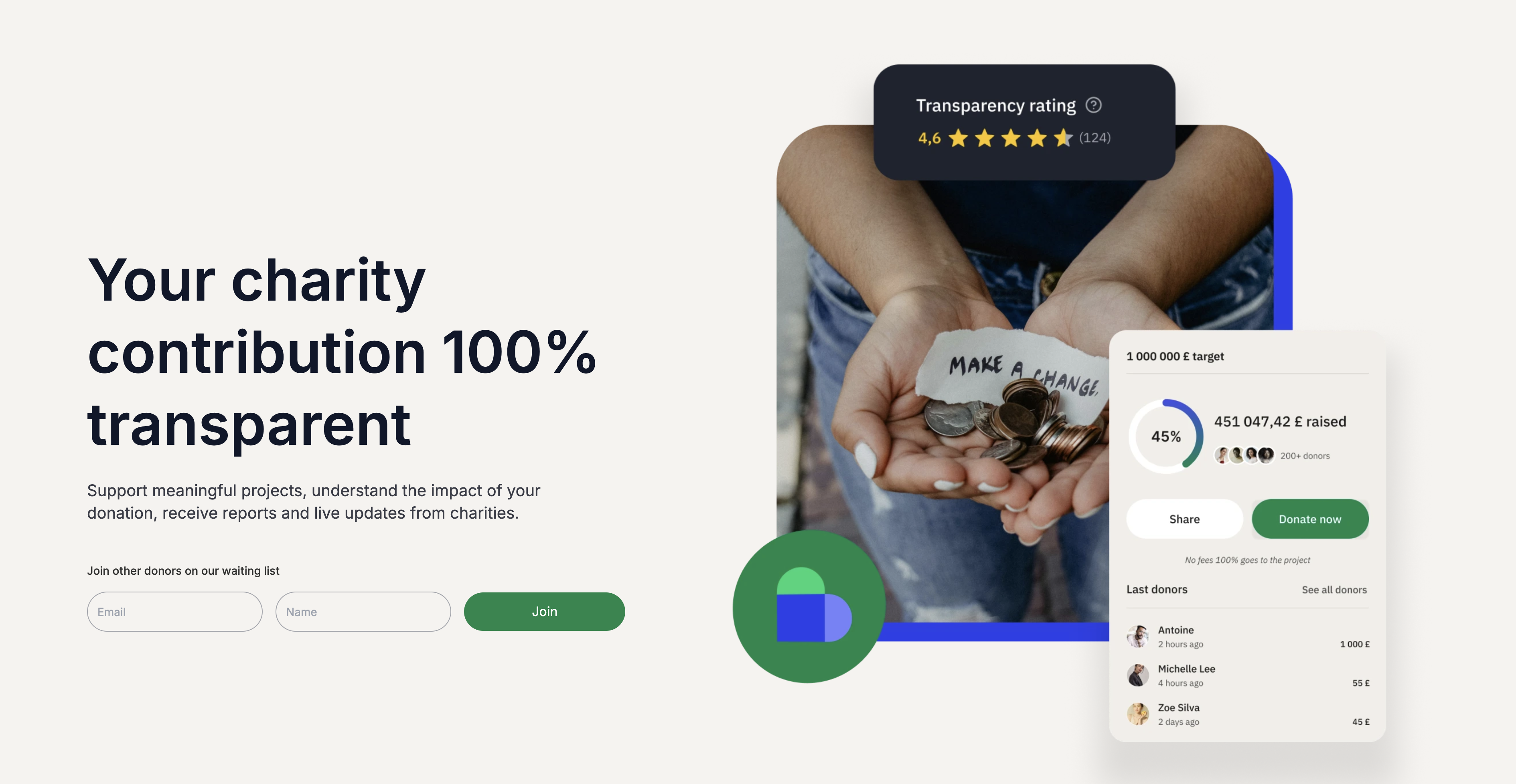
Rebuilding Donor Trust in a Digital World (Ep 1/5)
Why transparency is the new currency of giving
In an age of instant information and heightened public scrutiny, donor trust is no longer a given – it’s earned. As a charity leader, especially within a large organisation, you're likely familiar with this challenge. Supporters want more than emotional appeals and impact stories; they expect concrete proof that their donations are used effectively, ethically, and transparently.
Unfortunately, the traditional approach to communication and reporting hasn’t kept up. Annual reports, sporadic updates, and siloed internal data are no longer enough. The reality is that even the most impactful projects can go unnoticed, or worse, raise suspicion, if stakeholders aren’t kept clearly informed. Public trust is fragile (only 48% Trust charities today (CAF 2023 Giving Report))– and without it, fundraising and mission delivery both suffer.
But here’s the opportunity: by embracing transparency and leveraging modern digital tools, your organisation can move from defensive explanations to proactive trust-building. In this post, we explore the why, what, and how of rebuilding donor trust in a digital world.
The Trust Gap: Understanding the Challenge
Studies have shown that trust in charities fluctuate. Often due to negative media coverage, perceived financial mismanagement, or a lack of visible results. According to the Charity Commission data, transparency is consistently ranked as one of the top drivers of public trust. And the CEO of the Charity Commission, said at the Charity Times Annual Conference:
"The key thing for me in Public Trust, is always about Transparency" (David Holdsworth, May 2025)
It goes further than just about avoiding scandal. Even well-run charities face skepticism if they aren’t communicating clearly and regularly. Stakeholders today expect access to detailed financials, real-time project updates, and evidence that their money is making a measurable difference. When they don’t get that, the default assumption isn’t always positive.
Transparency Is the Antidote
Being transparent isn’t just about publishing a PDF of your annual accounts. It’s about actively showing supporters that you’re:
- Spending responsibly
- Delivering real results
- Allowing them to follow along the journey in real time
Modern donors want a window into your world – and digital tools offer a powerful way to provide that.
For example:
- Project dashboards can display progress in real-time, showing outcomes achieved, money spent, and stories from the field. Allowing for Management and Monitoring in one place.
- Automated reporting tools can update impact reports and summaries as data comes in, giving stakeholders up-to-date visibility with ease.
- Data visualisation allows you to turn dense spreadsheets into accessible, easy-to-understand graphics for funders and the public.
This level of openness signals competence, integrity, and respect for your supporters.
The Role of Software in Building Trust
One of the biggest blockers to transparency is time. Staff are stretched, systems are disconnected, and compiling reports is a manual nightmare. That’s where modern charity software steps in.
With Philanthrify, you can:
- Centralise financial, project, and impact data in one place
- Generate custom reports automatically for different stakeholders
- Keep your supporter updates current without repetitive manual work
- Track outcomes alongside spending to show value-for-money
Imagine a donor logging into a dashboard to see exactly how their contribution is progressing. Or a funder receiving an automated quarterly impact report with zero last-minute scrambling. That’s what modern systems make possible.
Case Study: Spotlight on Africa and Growth built through Trust
Spotlight on Africa is a small charity that was making £30k a year helping impoverished communities in Uganda be lifted up through Education, Health, Clean Water and Economic Empowerment projects. With such a spread across many areas and almost solely being run by volunteers they struggled to get their message heard by donors, especially if a donor only cared about one specific area. That is until they built a direct connection between each individual donor and what impact their money is having. They did this mainly with larger donors through whatsapp, showing updates, progress, pictures and detailed reports. It was all manual and time constraining, but it worked! All of a sudden they were raising £700k in a year. Now they are looking to improve this method at scale using Philanthrify.
While most charities are resource constrained, the principle holds. If you can give donors a front-row seat to the impact they helped create, they’ll keep showing up for you.
Actionable Steps to Rebuild Donor Trust
If you’re ready to start rebuilding or reinforcing trust, here are five things you can do this quarter:
- Audit Your Current Transparency: What do donors see when they visit your website or read your updates? Do you clearly show how funds are used and what results are being achieved?
- Consolidate Your Data: If your impact, financial, and supporter data are in separate systems, start planning how to bring them together.
- Simplify Your Reporting: Create a one-page dashboard of key metrics (spending, beneficiaries served, stories of change) and update it monthly.
- Be Honest, Not Just Positive: Include lessons learned and course corrections in your communications. Donors respect honesty.
- Invest in Tools That Scale Trust: Explore charity software platforms that enable automation, integration, and transparency without adding burden.
And if you would like a partner to help with this. Reach out to our team, we have built all the software to make this as easy as possible.
Conclusion: Trust Is Built One Transparent Action at a Time
Rebuilding donor trust isn’t about PR or flashy campaigns. It’s about showing up consistently, being honest, and proving that you’re delivering what you promised. In the digital age, the most trusted charities will be those that operate in the open.
Modern software doesn’t just make this possible – it makes it simple.
If you’re ready to start turning transparency into your competitive advantage, download our full guide: Transforming Trust and Impact: A Modern Guide for Charity Leaders. It’s packed with tools, templates, and real-world examples that show how smart tech can help your charity lead with integrity and impact.
Next up in this series: Donor Retention is Broken – Here’s How to Fix It with Personalisation
Stay tuned for Blog 2 as we continue the journey of supporting you to transform your charity through smarter tech.


